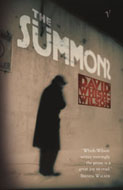Review - The Dying Beach by Angela Savage (Text 2013)
It’s been a while between reviews, but I enjoyed the new Angela Savage novel, The Dying Beach, so much I wanted to share. The novel arrived in my local bookshop at the perfect time – there was no chance of me getting away to Thailand for a holiday anytime soon, something that I’ve been fantasising about since reading Angela’s previous novel – The Half-Child, but this was surely the next best thing. It’s no mean feat to set a crime story in a ‘foreign’ country that does justice to its setting and people, and in a way that doesn’t glamorise or romanticise, or judge or demonise. Jayne Keeney, and her partner Rajiv Patel, are both outsiders of sorts in Thailand but both have a special kind of access, Jayne though her knowledge of the language and street-smarts about the delicacies and nuances of Thai culture, and Rajiv though his eager consuming of natural history and Thai historical texts, but also because of his observant nature and preparedness to listen and learn, rather than blunder along like most farang. Jane and Rajiv are a great pair, complementing one another in ways that both reflect their differences but also highlight what each finds attractive about the other. What’s beautifully rendered is that the relationship is still developing rather than coming to the readers as something fully formed – there are moments throughout the book where this is reinforced, as their differences come to the fore and they are forced to negotiate their next move in the light of the danger that it might bring, but also the damage that it might do to their romance. At other times the moment is quieter, such as when Jayne pops a five baht coin into the slot of an automated divining service, complete with a laughing Buddha. For Jayne, having her fortune told is no thing, but Rajiv on the other hand isn’t prepared to tempt fate – his beliefs are different.
So The Dying Beach is a love story as well as a tightly plotted crime thriller, with playful twists such as Jayne and Rajiv dressing up to impersonate potential corporate investors, to get themselves closer to the action – but which allows them to role-play the dynamics of their relationship as something different, inverted and something altogether more conventional. It’s a nice scene, and captures the lightness of touch between the pair and the fact that neither takes themselves too seriously – despite the deadly game that they find themselves playing.
The novel begins when a young tour guide has been found drowned near a tourist beach, and to Jayne it looks suspicious. When another young Thai woman is murdered, and a farang woman who looks suspiciously like Jayne is killed, her suspicions firm, although there’s no obvious suspect from among the corporations or their local cheerleaders that can be identified. Guided by an ambiguous diary, the novel charts Jayne and Rajiv’s movement towards identifying Pla’s killer, who was present at sensitive community consultations between corporations and villager, and so might have been murdered because of her knowledge, but also their uncovering of the consequences of a broader crime – that which contributes to environmental degradation in Thailand, one driven by greed but also poverty and desperation. There’s a nice twist to the end of the tale, one that can’t be detailed here, except to say that The Dying Beach delivers as a crime thriller, as you’d expect from a writer of Savage’s experience (this is her third Jayne Keeney novel, and her previous two were both short-listed for Ned Kelly Awards, which tells you something of their quality), but also as a clear-sighted vision of the impacts of social change and tourism on an ancient culture, a vivid recreation of the customs and lifestyles and worldviews of the people of Thailand, as a very pleasing love story and finally as an exemplar of very efficient characterisation. In particular, as this characterisation is developed throughout the book, I’d like to point out two examples of this technical virtuosity: firstly, the way that Savage skilfully uses a braided narrative to shift between perspectives of characters on both sides of the crime that generates the central mystery of the book; so skilfully in fact that she’s able to do this from paragraph to paragraph, and on occasions within the same paragraph, and secondly to use descriptions of the natural world in such a way that they shine a light upon the characters doing the describing – from the observation by one character of an old gecko struggling to feed itself on insects, which he likens to the behaviour of a family member that has become a liability, to the observation of mud-skips tumbling over before righting themselves that’s a metaphor for the way Jayne feels her investigation is proceeding, to the description of trees on a newly graded road leading to a tourist facility ‘weighed down with dust’, and finally to my favourite image – one that beautifully marries character with action, when the thuggish young man Othong observes how his entrepreneurial old uncle treats ‘his new mobile phone the way he treated his employees, as if it couldn’t be trusted to work unless he was shouting at it.’ Such deft and unobtrusive characterisation here of both uncle and nephew with a single telling observation is a mark of both the humour and insight that is a hallmark of Angela Savage’s writing, and the reason I’ve been recommending it to so many people…




